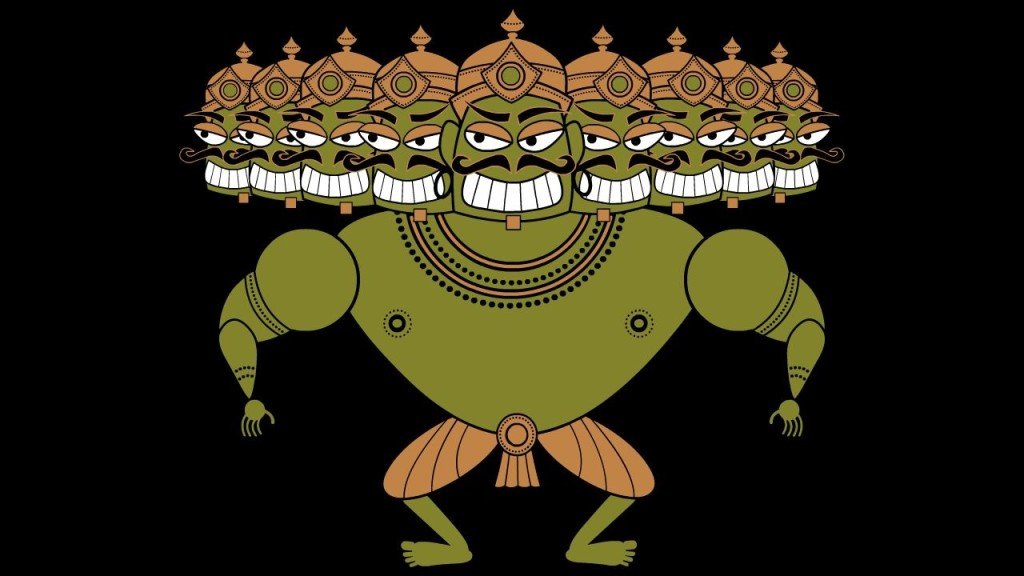Ravana’s ten heads is a metamorphication of his knowledge of the six shastras and the four Vedas.
Namely:
- Sankhyashastra (Mathematics)
- Yog Shastra (Yoga as a way of life, meditation)
- Nyayashastra (Law and administration)
- Vaisheshik Shastra (Physics, astronomy, mechanics)
- Purvamimansa (Philosophy, Justification)
- Uttar Mimansa Shastra
- Rigveda
- Yajurveda
- Samveda
- Atharvaveda.
His original name is “Dashagriva” (a monster with 10 heads).
Ravana was a master in astrology, it is said that he broke one of Saturn’s arms, when Sani deva refused to be in a perfect position which would have made Meghnad immortal.
While Ravana was dying, Lakhsmana ran towards him so that he can learn the knowledge of diplomacy, since nobody in this planet had better knowledge and experience of administrative diplomacy over Ravana. His 10 heads represented a mammoth pool of knowledge and experience as a ruler, king and as a Brahman.
From another perspective, the 10 heads signify the 10 negative forms of love.
- Ahamkara – Ego
- Moha – Attachment
- Krodha – Anger
- Ghrina – Hatred
- Paschataap – regret
- Irshya – jealousy
- Lobha – Greed
- Kama – Lust
- Jaddata – Insensitivity
- Bhaya – Fear
Dussehera is a festival when effigies of the demon king is burnt. This is a metamorphic representation of cleaning your own mind, getting rid of the negative forms of love and maya that traps the mind.
Hence the day is called Vijaya Dashami – Vijaya (Win) + Dashami (10)
which means winning those 10 distortions of mind.

